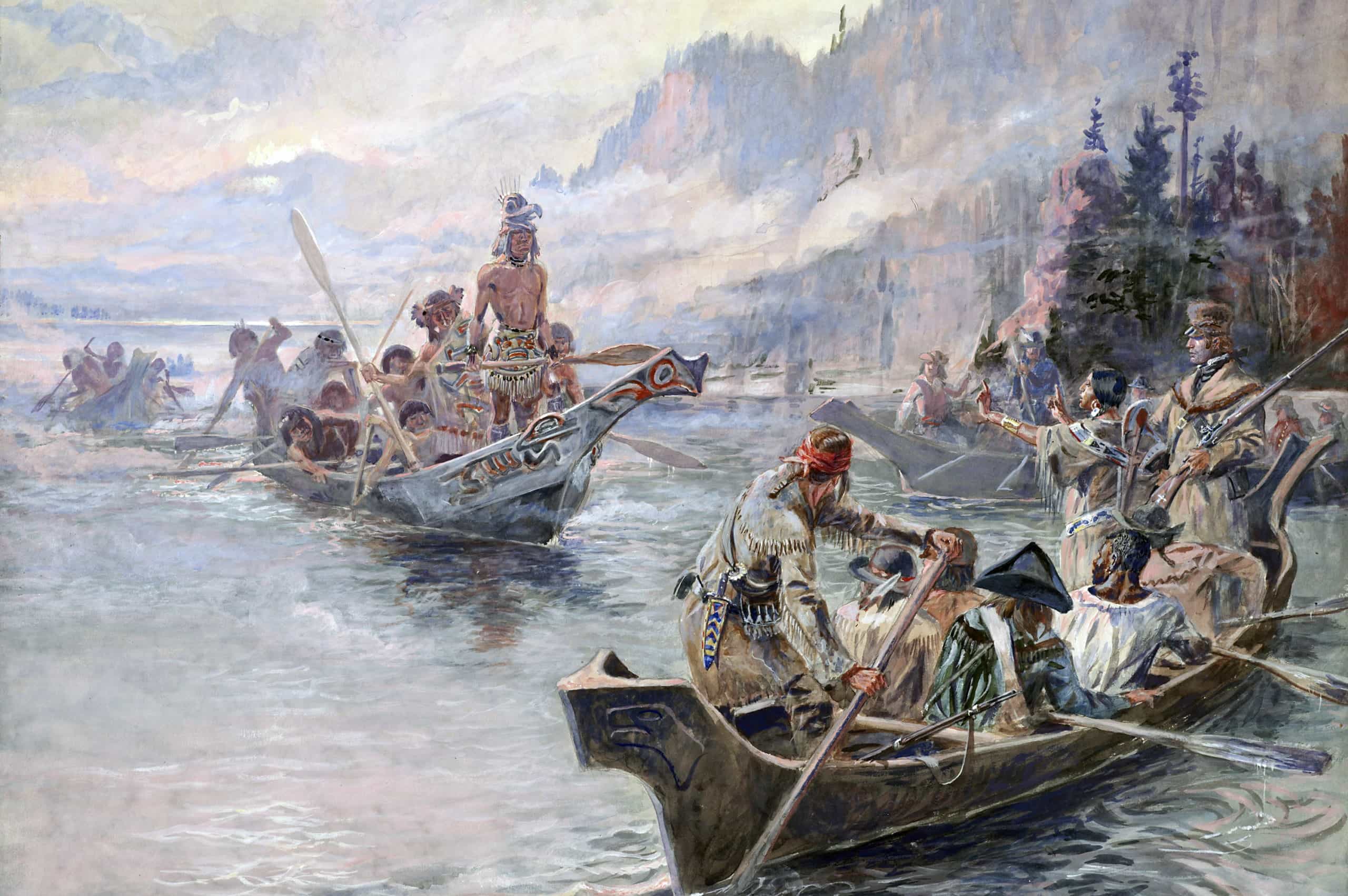
Ever wondered how the wild, uncharted lands of America were explored? Imagine stepping back in time to the early 1800s, where vast expanses of unknown territory stretched out, waiting to be discovered. That's exactly what Lewis and Clark did on their epic expedition, a journey filled with incredible challenges and discoveries. This adventure not only mapped the unknown but also brought to light numerous fascinating facts about the land, its natural resources, and the diverse cultures of Native American tribes they encountered. From encountering new animal species to navigating treacherous terrains, their expedition was nothing short of extraordinary. Ready to dive into some of the most amazing facts about Lewis and Clark's journey? Let's set off on this adventure together, uncovering the marvels of their historic expedition.
Key Takeaways:
- Lewis and Clark were chosen by President Jefferson to lead an expedition across the newly acquired western territory. Their mission was to explore, establish trade, and assert US sovereignty over the indigenous peoples.
- The expedition covered over 8,000 miles, met with over 50 Native American tribes, and made significant scientific discoveries. Their return marked the successful completion of one of the most significant expeditions in American history.
Who Were Lewis and Clark?
Meriwether Lewis and William Clark were American explorers commissioned by President Thomas Jefferson to lead an expedition, known as the Corps of Discovery, across the newly acquired western portion of the country after the Louisiana Purchase in 1803. Their mission was to explore the unknown territory, establish trade with Native American tribes, and assert United States sovereignty over the indigenous peoples along the Missouri River.
- Lewis was President Jefferson's private secretary, chosen for his skills in natural sciences and leadership abilities.
- Clark, a seasoned frontiersman and military man, was selected by Lewis to share command of the expedition.
The Goals of the Expedition
The primary objectives of the Lewis and Clark Expedition were to map the territory, document its natural resources and inhabitants, and find a practical route across the western half of the continent. Their journey would pave the way for westward expansion of the United States.
- They sought to discover a direct and practicable water communication across the continent for the purposes of commerce.
- Establishing good relations with Native American tribes was crucial for the success of their mission and future American endeavors in the west.
The Journey Begins
On May 14, 1804, the Corps of Discovery departed from Camp Dubois, near present-day Hartford, Illinois, embarking on a perilous journey that would become a pivotal moment in American history.
- The expedition covered over 8,000 miles in total, from St. Louis, Missouri, to the Pacific Ocean and back.
- They traveled in a 55-foot long keelboat and two smaller pirogues, navigating up the Missouri River for the initial phase of their expedition.
Encounters with Native Americans
One of the most significant aspects of the Lewis and Clark Expedition was its interactions with various Native American tribes. These encounters were generally peaceful and were crucial for the expedition's success.
- The Corps of Discovery met with over 50 Native American tribes, exchanging gifts and establishing diplomatic relations.
- Sacagawea, a Shoshone woman, joined the expedition as an interpreter and guide, playing a key role in the success of these interactions.
Challenges Faced
The expedition faced numerous challenges, from harsh weather conditions to difficult terrain and the threat of wildlife.
- Members of the expedition suffered from diseases, injuries, and the constant threat of attack from bears and other wild animals.
- Navigating the treacherous waters of the Missouri and Columbia Rivers proved to be one of the most daunting tasks.
Scientific Discoveries
The Lewis and Clark Expedition made significant contributions to the scientific knowledge of the American West, documenting over 300 new species.
- They collected and described new animal species, including the grizzly bear and prairie dog.
- Over 200 botanical specimens were collected, expanding the scientific understanding of the region's flora.
The Return Home
After reaching the Pacific Ocean in November 1805, the Corps of Discovery began their journey back home, arriving in St. Louis on September 23, 1806, to much acclaim.
- Their return marked the successful completion of one of the most significant expeditions in American history, providing valuable information for the future settlement and governance of the western territories.
- The detailed journals kept by Lewis and Clark during their expedition remain invaluable historical documents, offering insight into the early 19th-century American frontier.
A Look Back at Lewis and Clark's Remarkable Journey
Lewis and Clark's expedition stands as a monumental chapter in American history, showcasing courage, determination, and the spirit of exploration. Their journey, fraught with challenges and discoveries, paved the way for westward expansion and offered invaluable insights into the vast, uncharted territories of the early United States. Through their eyes, we've learned about diverse ecosystems, encountered numerous Native American tribes, and cataloged countless new species. This expedition didn't just map a physical landscape; it charted a course for future generations, inspiring explorers, scientists, and dreamers alike. As we reflect on their remarkable adventure, let's remember the enduring legacy of Lewis and Clark. It's a tale of human curiosity and the relentless pursuit of knowledge, reminding us that the journey is just as important as the destination.
Frequently Asked Questions
Was this page helpful?
Our commitment to delivering trustworthy and engaging content is at the heart of what we do. Each fact on our site is contributed by real users like you, bringing a wealth of diverse insights and information. To ensure the highest standards of accuracy and reliability, our dedicated editors meticulously review each submission. This process guarantees that the facts we share are not only fascinating but also credible. Trust in our commitment to quality and authenticity as you explore and learn with us.


